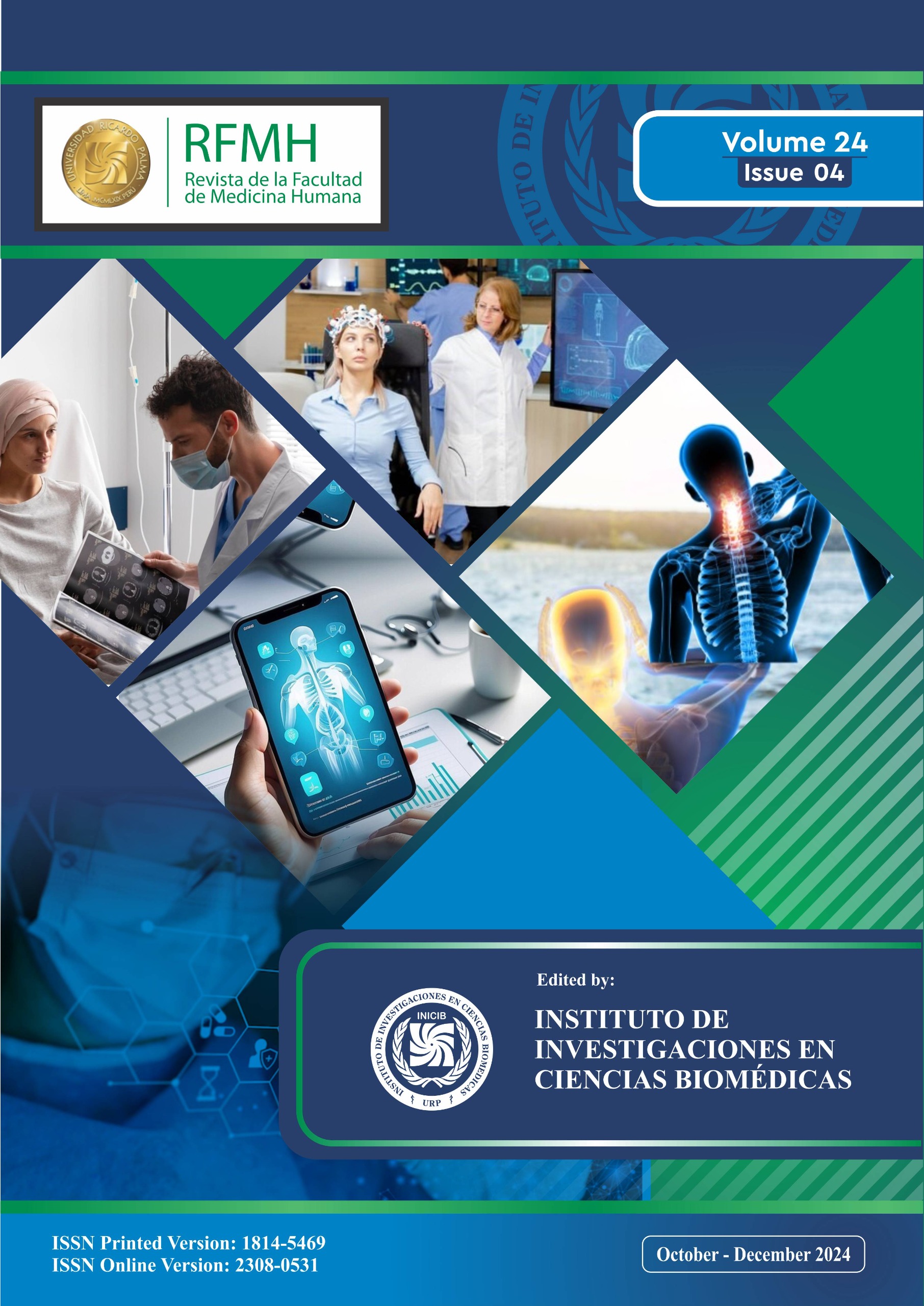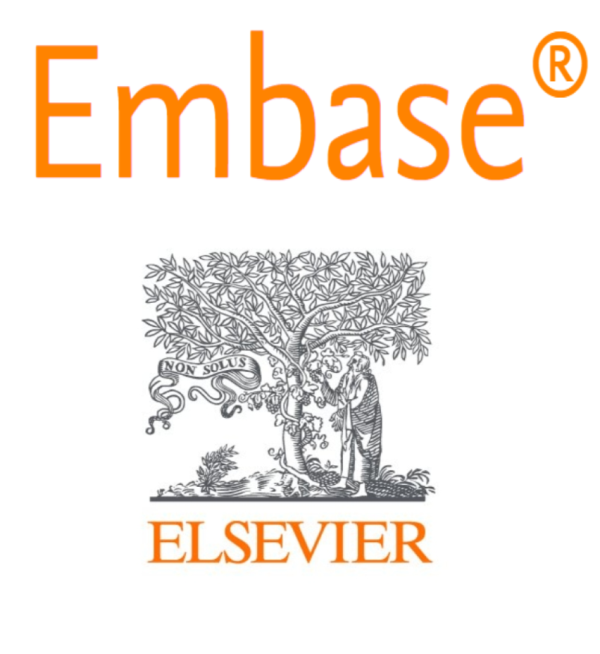Socio-cultural factors that influence 50-year-old users for papanicolau taking from a nasca hospital
Factores socioculturales que influyen en las usuarias de 50 años para la toma de papanicolau de un hospital nasca
Keywords:
Pap smear, sociocultural factors, knowledge levelAbstract
Objective: The objective of this study was to determine the sociocultural factors in 50-year-old users for Pap smears at the Ricardo Cruzado Rivarola de Nasca hospital during the period December 2021 - February 2022. Material and Methods: Observational, analytical, and prospective study. The study population is made up of 80 50-year-old users who attend the Ricardo Cruzado Rivarola hospital for Pap tests at the gynecology-obstetrics office and the sample is 67 users, selected by non-probabilistic sampling for convenience. Results: For the first analysis, in simple and multiple regression, it was found that women with high levels of knowledge had a 384% and 382% higher frequency of having ever undergone a PAP test compared to those with low levels of knowledge. Conclusions: The level of knowledge about the PAP has a relevant influence on having carried out a PAP; but also the women who had a high level were the ones who had the highest frequency of having done it. This added to the number of children; possibly because in the circles of women with children one of the topics to be discussed is about maternal health and within them the PAP.
Downloads
References
Factores socioculturales que influyen en la decisión de las usuarias para la toma de papanicolaou, puesto de salud metropolitana 2018 [Internet]. [cited 2021 Sep 22]. Disponible en: http://repositorio.unfv.edu.pe/handle/UNFV/3238
González ZM. Programa de detección del cáncer cervicouterino: políticas públicas y experiencias de los actores que implementan el programa en el estado de Veracruz, México. Salud Colect. 2017;13(3):521–35. Disponible en: http://www.scielo.org.ar/scielo.php?script=sci_arttext&pid=S1851-82652017000300521&lng=es&nrm=iso
Plan nacional para la prevención y control de cáncer de cuello uterino 2017- 2021 (R.M. Nº 440-2017/MINSA) - Gobierno del Perú Disponible en: http://bvs.minsa.gob.pe/local/MINSA/4232.pdf
Calderón Baldera KE. Factores que Intervienen en la decisión de la Toma de la Prueba de Papanicolaou en Mujeres de 20 A 69 Años del Distrito de Lambayeque. 16 de marzo de 2018 [citado 9 de mayo de 2023]; Disponible en: http://repositorio.unprg.edu.pe/handle/20.500.12893/1840
Serva Ortega BL, Soto Flores M. Nivel de conocimiento y actitudes del tamizaje de papanicolaou en mujeres que acuden al C.S. De Chupaca de Enero - Marzo del 2016. Universidad Peruana del Centro [Internet]. 2016 [citado el 26 de mayo de 2022]; Disponible en: http://repositorio.upecen.edu.pe/handle/UPECEN/80
Oliva Hanke C. Nivel de conocimiento, actitud y práctica en la realización del exámen de papanicolaou en mujeres mayores de 15 años que asistieron al consultorio externo de Ginecología del Hospital San José en los meses de Julio y Agosto del 2015. Universidad Ricardo Palma [Internet]. 2016 [citado el 26 de mayo de 2022]; Disponible en: http://repositorio.urp.edu.pe/handle/urp/569
Cancer (IARC) TIA for R on. Global Cancer Observatory [Internet]. [citado el 23 de junio de 2022]. Disponible en: https://gco.iarc.fr/
Ministerio de Salud. Plan nacional para la prevención y control de cáncer de cuello uterino 2017- 2021 2017. Disponible en: http://bvs.minsa.gob.pe/local/MINSA/4232.pdf
Castro M, Morfin R, Sánchez S, Roca J, Sánchez E, Williams M. Nivel de conocimiento sobre el cáncer cervical y el Papanicolaou en relación al temor, estrés o vergüenza al tamizaje: Un estudio transversal en una comunidad pobre de Lima. Revista Peruana de Ginecología y Obstetricia. 2005;51(2):94–9. doi: https://doi.org/10.31403/rpgo.v51i401
Gutiérrez C, Romaní F, Ramos J, Alarcón E. Factores asociados con el conocimiento y tamizaje para cáncer de cuello uterino (examen de Papanicolaou) en mujeres peruanas en edad fértil. Análisis del periodo 1996-2008. :12. Disponible en: https://pesquisa.bvsalud.org/portal/resource/pt/lil-619934
Bendezu-Quispe G, Soriano-Moreno AN, Urrunaga-Pastor D, Venegas-Rodríguez G, Benites-Zapata VA. Association between knowledge about cervical cancer and having a Papanicolaou test in peruvian women. Rev Peru Med Exp Salud Publica. 2020;37:17–24. doi: https://doi.org/10.17843/rpmesp.2020.371.4730
Mamani S, Telma J, De La Cruz Vargaz. Determinantes socioculturales asociados a la no realización del tamizaje de cáncer de cuello uterino en mujeres de 30 a 49 años de edad según la Encuesta Demográfica y de Salud Familiar (ENDES) del año 2018. Published online 2020 Disponible en: https://repositorio.urp.edu.pe/handle/20.500.14138/2963?show=full
Luque JS, Maupin JN, Ferris DG, Guevara Condorhuaman WS. Reaching women in the Peruvian Andes through cervical cancer screening campaigns: assessing attitudes of stakeholders and patients. Patient Prefer Adherence. 2016;10:2107–16. doi: https://doi.org/10.2147/PPA.S119886
Huamaní C, Hurtado-Ortega A, Guardia-Ricra M, Roca- Mendoza J. Conocimientos y actitudes sobre la toma de papanicolaou en mujeres de Lima, Perú 2007. Revista Peruana de Medicina Experimental y Salud Publica. 2008;25(1):44–50. Disponible en: http://www.scielo.org.pe/scielo.php?script=sci_arttext&pid=S1726-46342008000100007
Hunter JL. Cervical cancer in Iquitos, Peru: local realities to guide prevention planning. Cad Saude Publica. 2004;20(1):160–71. doi: https://doi.org/10.1590/s0102-311x2004000100032
Garcés P IC, Rubio L DC, Scarinci IC. Factores asociados con el tamizaje de cáncer de cuello uterino en mujeres de nivel socioeconómico medio y bajo en Bogotá, Colombia. Revista Facultad Nacional de Salud Pública. 2012;30(1):7–16. Disponible en: https://dialnet.unirioja.es/servlet/articulo?codigo=5079640
Rodríguez G, Caviglia C, Alonso R, Sica A, Segredo S, León I, et al. Conocimientos, actitudes y prácticas sobre el test de Papanicolaou y estadificación del cáncer de cuello uterino. Revista Médica del Uruguay. 2015;31(4):231–40. Disponible en: http://www.scielo.edu.uy/scielo.php?script=sci_arttext&pid=S1688-03902015000400002&lng=es
Miles TT, Riley-Powell AR, Lee GO, Gotlieb EE, Barth GC, Tran EQ, et al. Knowledge, attitudes, and practices of cervical cancer prevention and pap smears in two low-income communities in Lima, Peru. BMC Womens Health. 2021;21:168. doi: https://doi.org/10.1186/s12905-021-01291-8
Paz-Soldán VA, Nussbaum L, Bayer AM, Cabrera L. Low knowledge of cervical cancer and cervical pap smears among women in Peru, and their ideas of how this could be improved. Int Q Community Health Educ. 2010;31(3):245–63. doi: https://doi.org/10.2190/IQ.31.3.d
Paz-Soldán VA, Bayer AM, Nussbaum L, Cabrera L. Structural barriers to screening for and treatment of cervical cancer in Peru. Reprod Health Matters. 2012;20(40):49–58. doi: https://doi.org/10.1016/S0968-8080(12)40680-2
Paz Soldan VA, Lee FH, Carcamo C, Holmes KK, Garnett GP, Garcia P. Who is getting Pap smears in urban Peru? Int J Epidemiol. 2008;37(4):862–9. doi: https://doi.org/10.1093/ije/dyn118
Baezconde-Garbanati L, Agurto I, Gravitt PE, Luciani S, Murphy S, Ochoa C, et al. Barriers and innovative interventions for early detection of cervical cancer. Salud Publica Mex. 2019;61(4):456–60. doi: https://doi.org/10.21149/10425
Dufour DL, Piperata BA. Rural-to-urban migration in Latin America: an update and thoughts on the model. Am J Hum Biol. 2004;16(4):395–404. doi: https://doi.org/10.1002/ajhb.20043
Lee FH, Paz-Soldan VA, Carcamo C, Garcia PJ. Knowledge and attitudes of adult peruvian women vis-à-vis Human Papillomavirus (HPV), cervical cancer, and the HPV vaccine. J Low Genit Tract Dis. 2010;14(2):113–7. doi: https://doi.org/10.1097/LGT.0b013e3181c08f5e
Baumann LM, Robinson CL, Combe JM, Gomez A, Romero K, Gilman RH, et al. Effects of distance from a heavily transited avenue on asthma and atopy in a periurban shantytown in Lima, Peru. J Allergy Clin Immunol. 2011;127(4):875–82. doi: https://doi.org/10.1016/j.jaci.2010.11.031
Bou-Orm IR, Sakr RE, Adib SM. Cervical cancer screening among Lebanese women. Rev Epidemiol Sante Publique. 2018;66(1):1–6. doi: https://doi.org/10.1016/j.respe.2017.10.004
Arevian M, Noureddine S, Kabakian T. A survey of knowledge, attitude, and practice of cervical screening among Lebanese/Armenian women. Nurs Outlook. 1997;45(1):16–22. doi: https://doi.org/10.1016/s0029-6554(97)90053-1
Al-Meer FM, Aseel MT, Al-Khalaf J, Al-Kuwari MG, Ismail MFS. Knowledge, attitude and practices regarding cervical cancer and screening among women visiting primary health care in Qatar. East Mediterr Health J. 2011;17(11):855–61. doi: https://doi.org/10.26719/2011.17.11.856

Downloads
Published
How to Cite
Issue
Section
License
Copyright (c) 2023 Revista de la Facultad de Medicina Humana

This work is licensed under a Creative Commons Attribution 4.0 International License.





























